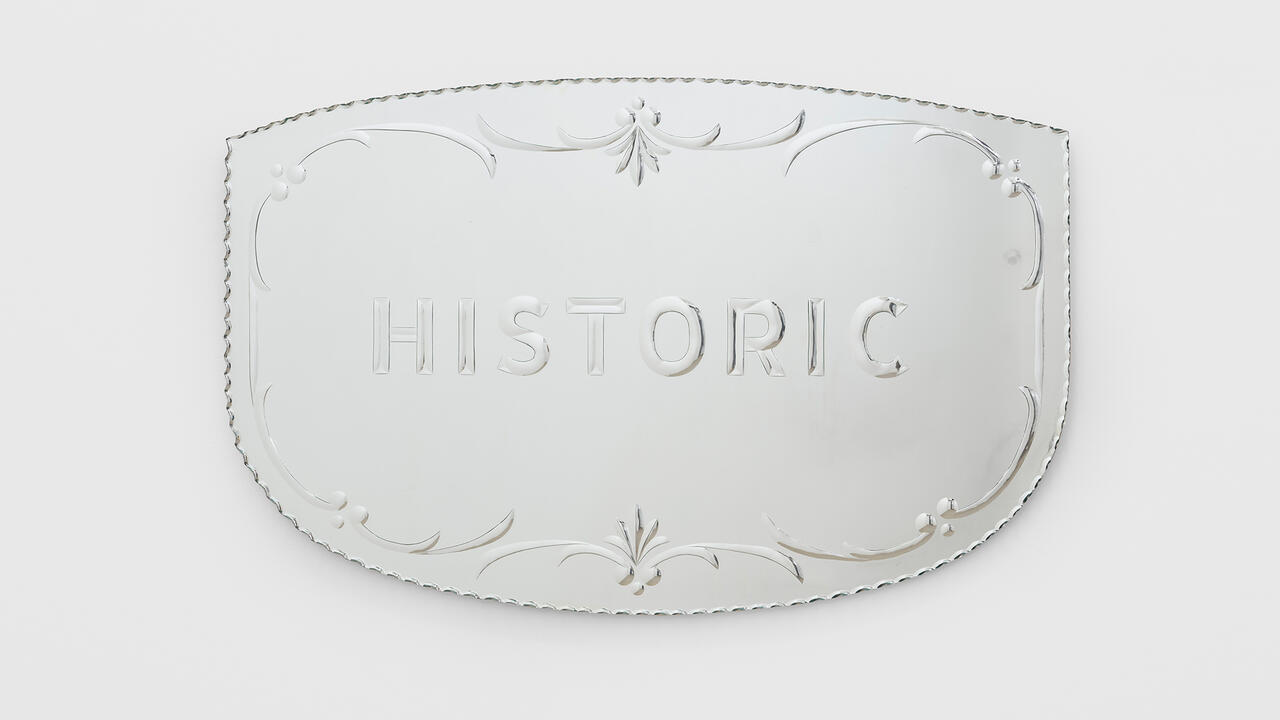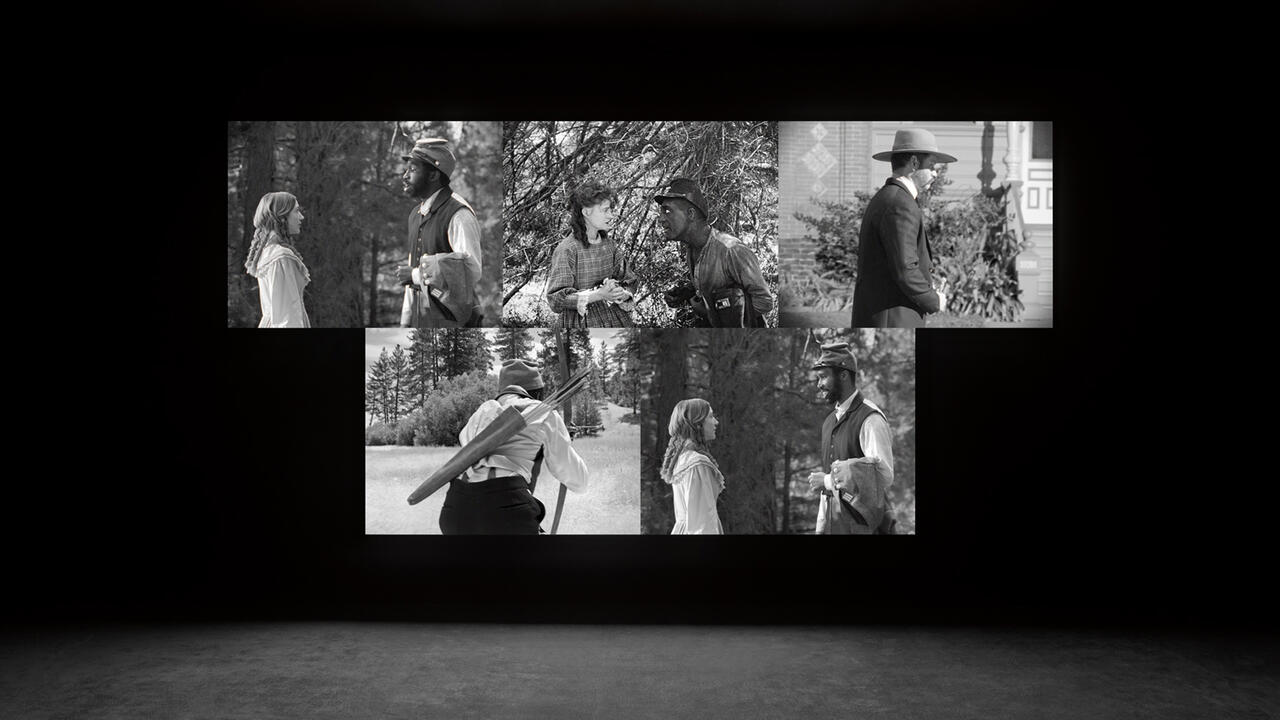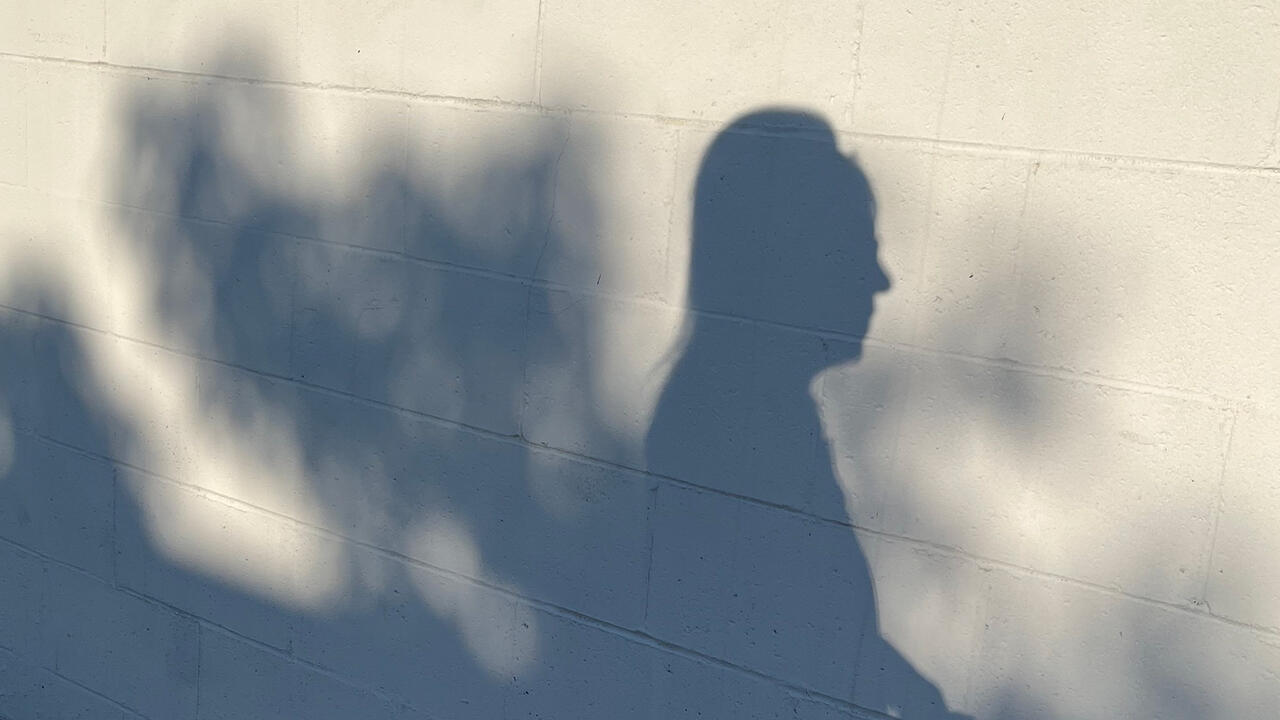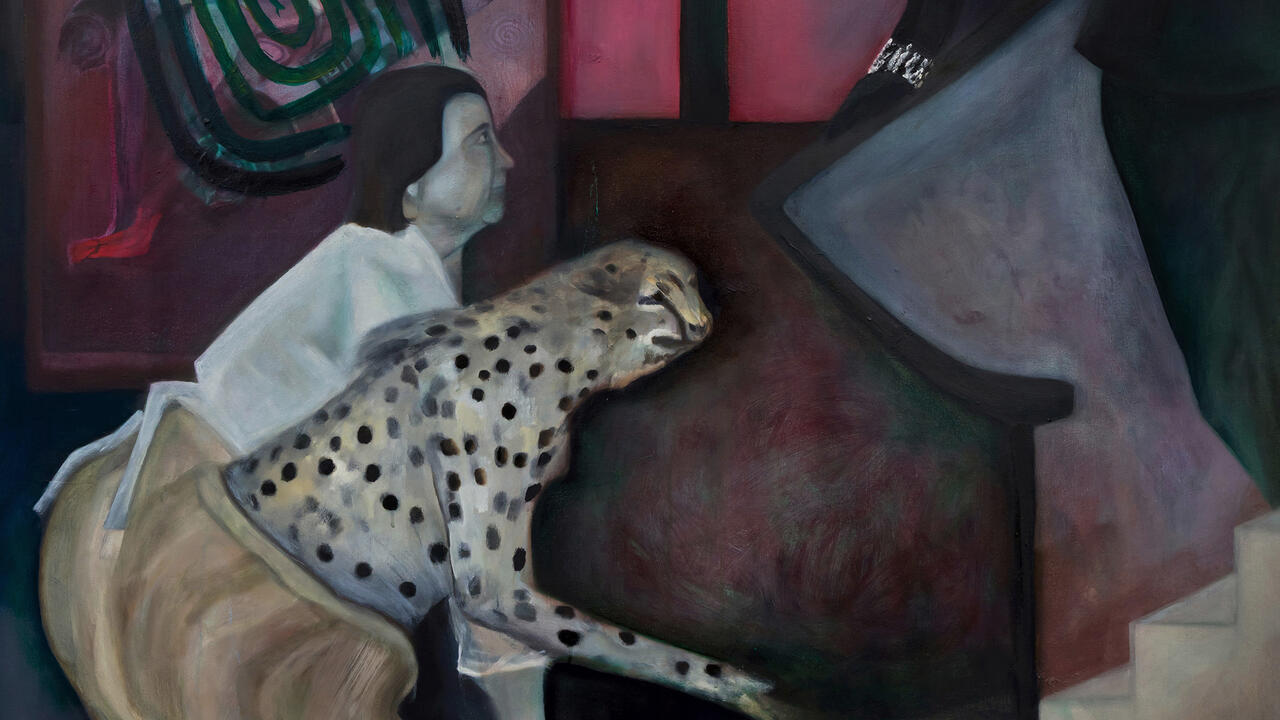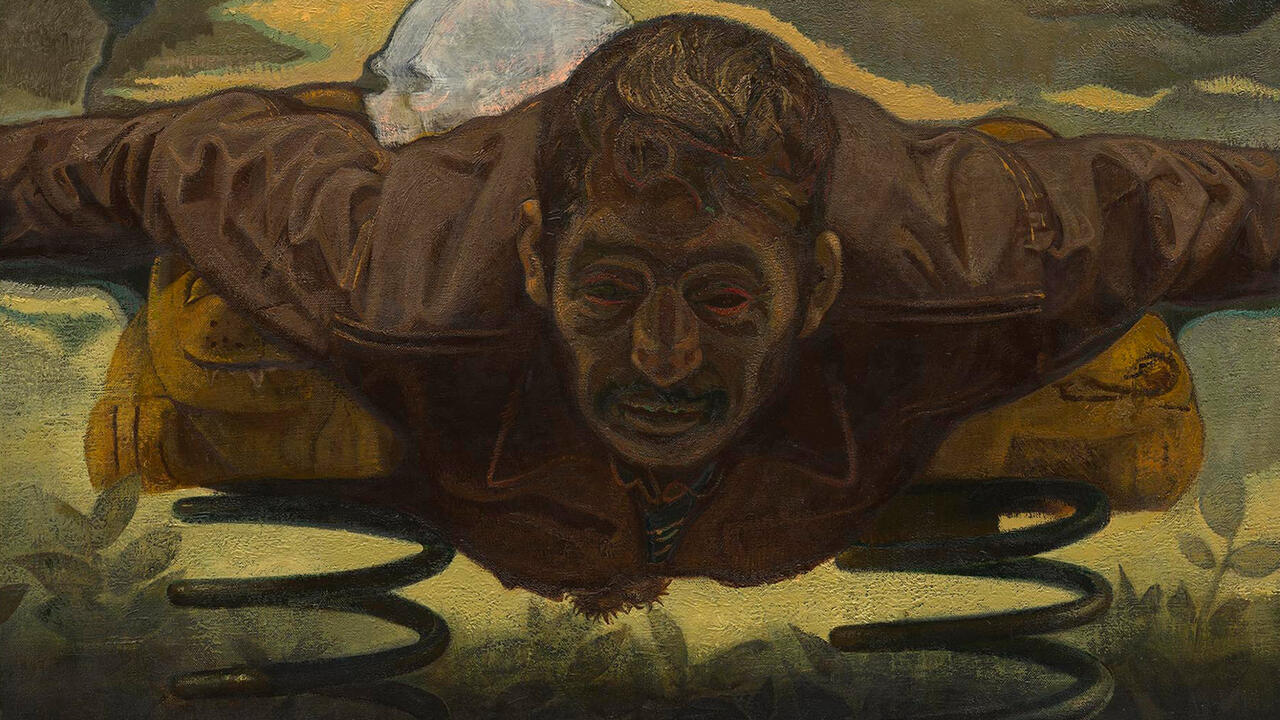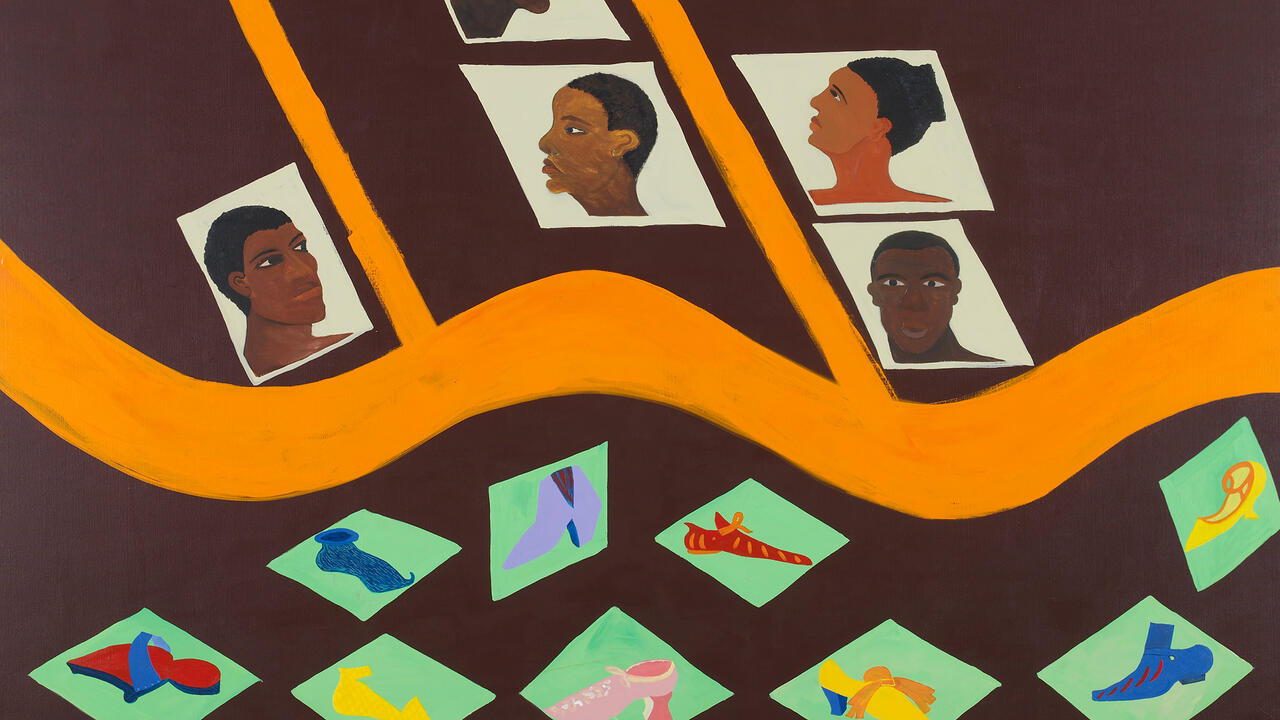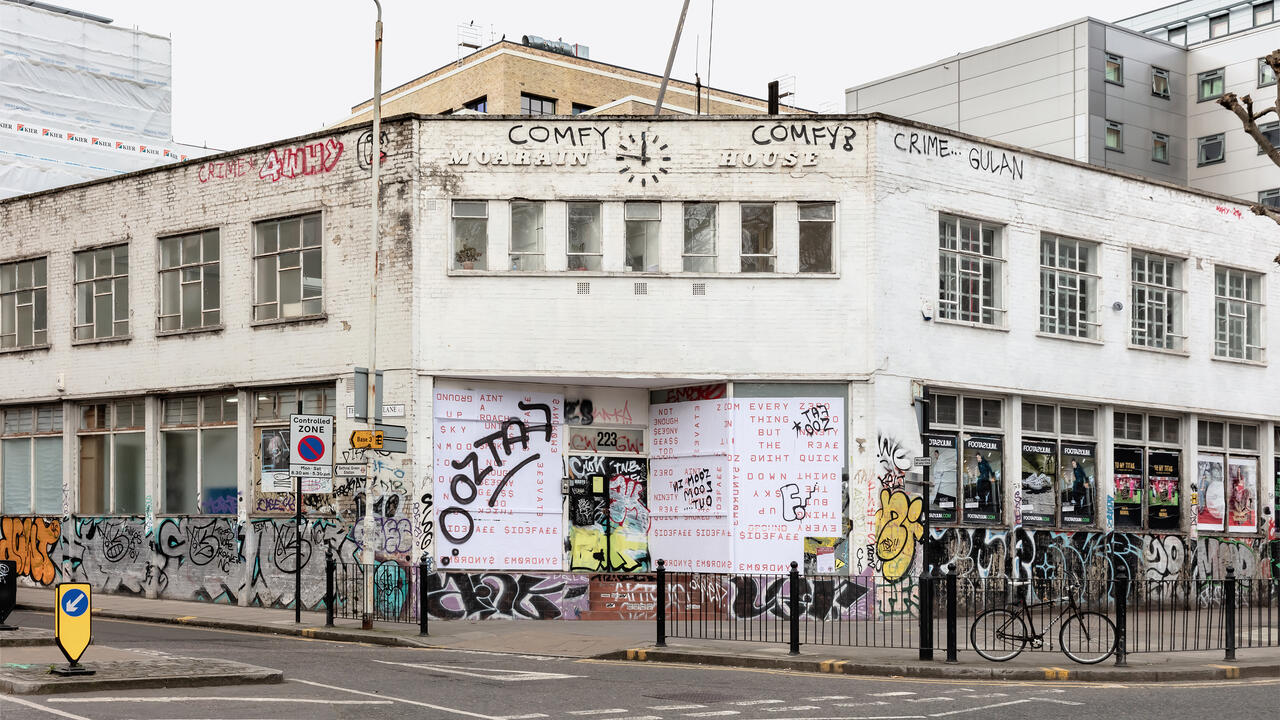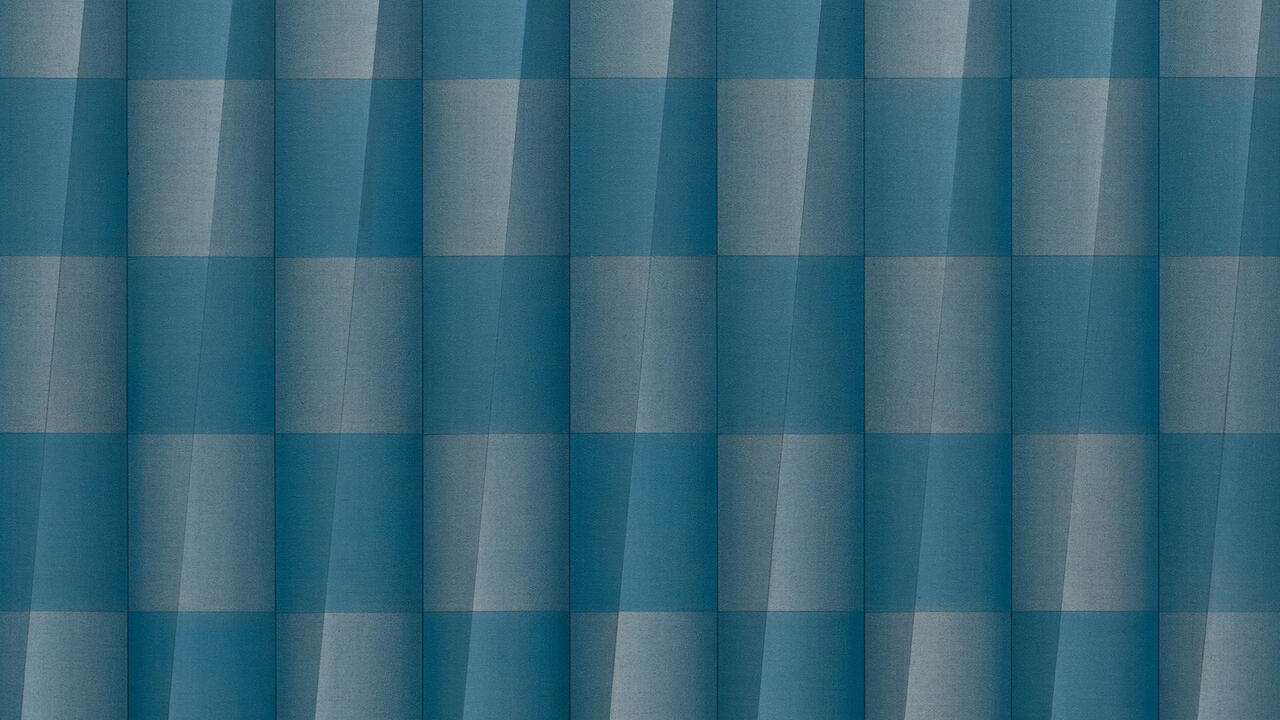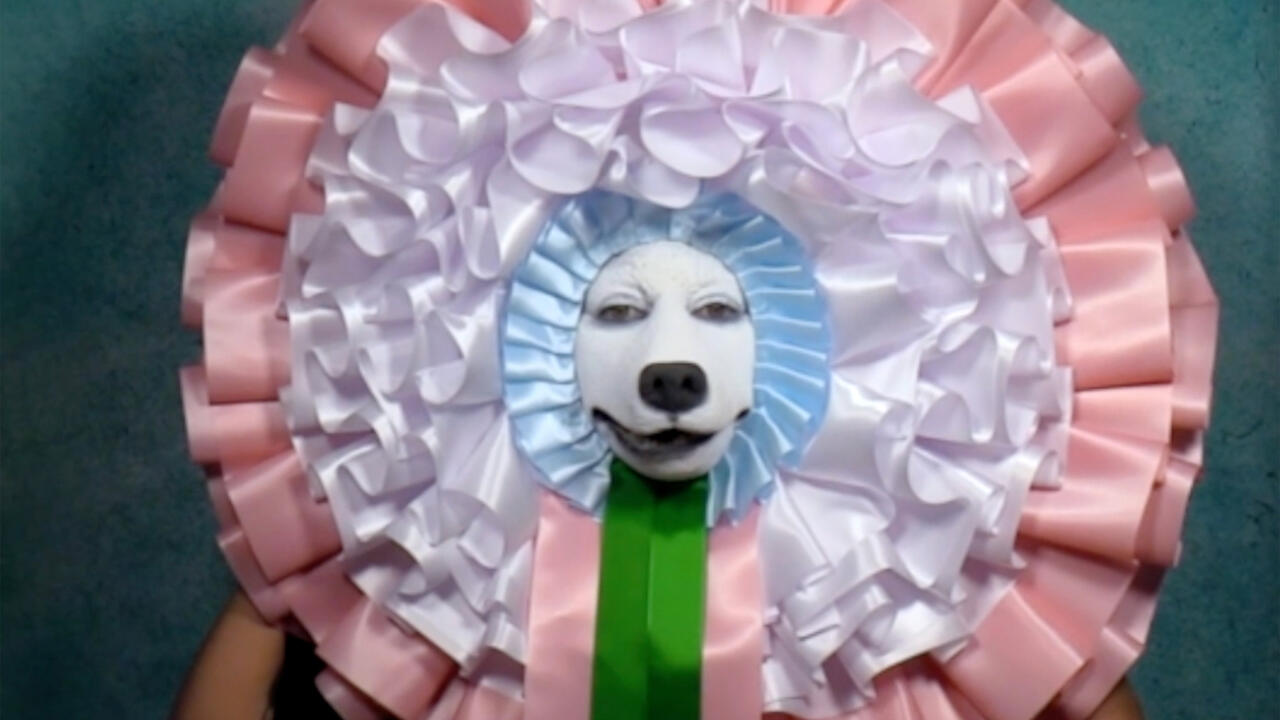Two Underrecognized Visual Poets Whose Work Kicks Back Against the Stilling of Female Tongues
At Richard Saltoun, London, two artists share the belief that rhythm is a trait of the body and women’s bodies are too closely policed
At Richard Saltoun, London, two artists share the belief that rhythm is a trait of the body and women’s bodies are too closely policed

‘I need / a new house’; ‘I need / a bed and four seats’; ‘I need / a life without memories’. In translation, these are three stark lines from Ho bisogno di una casa nuova (1978), a work of ‘poetic typecode’ by Tomaso Binga. The words are printed in red ink on paper and set amid a stream of repeating blue symbols that look like miniature lattices. (Each of these is an X typed over an A.) Red for emotion, blood, vitality; Binga’s desires sing out from the blue monotone that tries to cool their fervour.
Despite the name, ‘Tomaso Binga’ is a pseudonymous woman, Bianca Pucciarelli Menna. As a new double exhibition (with Greta Schödl) at Richard Saltoun makes clear, Binga has long been kicking back against the stilling of female tongues. In another typed work, Ho battuto le mani (‘I’ve Clapped My Hands’, 1982), she prints one 72-letter sentence three times in eight-by-nine grids, restarting from a different point each time. First, ‘ho battuto le mani tante volte a tanta gente ma solo per riscaldarle e per sentirmi viva’ (I’ve clapped my hands so many times for so many people but only to warm them up and feel alive); next, starting from ‘solo’, and then again from ‘tante’. As with ‘ho bisogno’, repeated as a mantra, to re-run the words implies dedication to telling her story; as with ‘senza ricordi’, the final words of Ho bisogno, to finish with a flicker of personal sadness implies that a woman’s lot is, at best, something to be stoically borne.
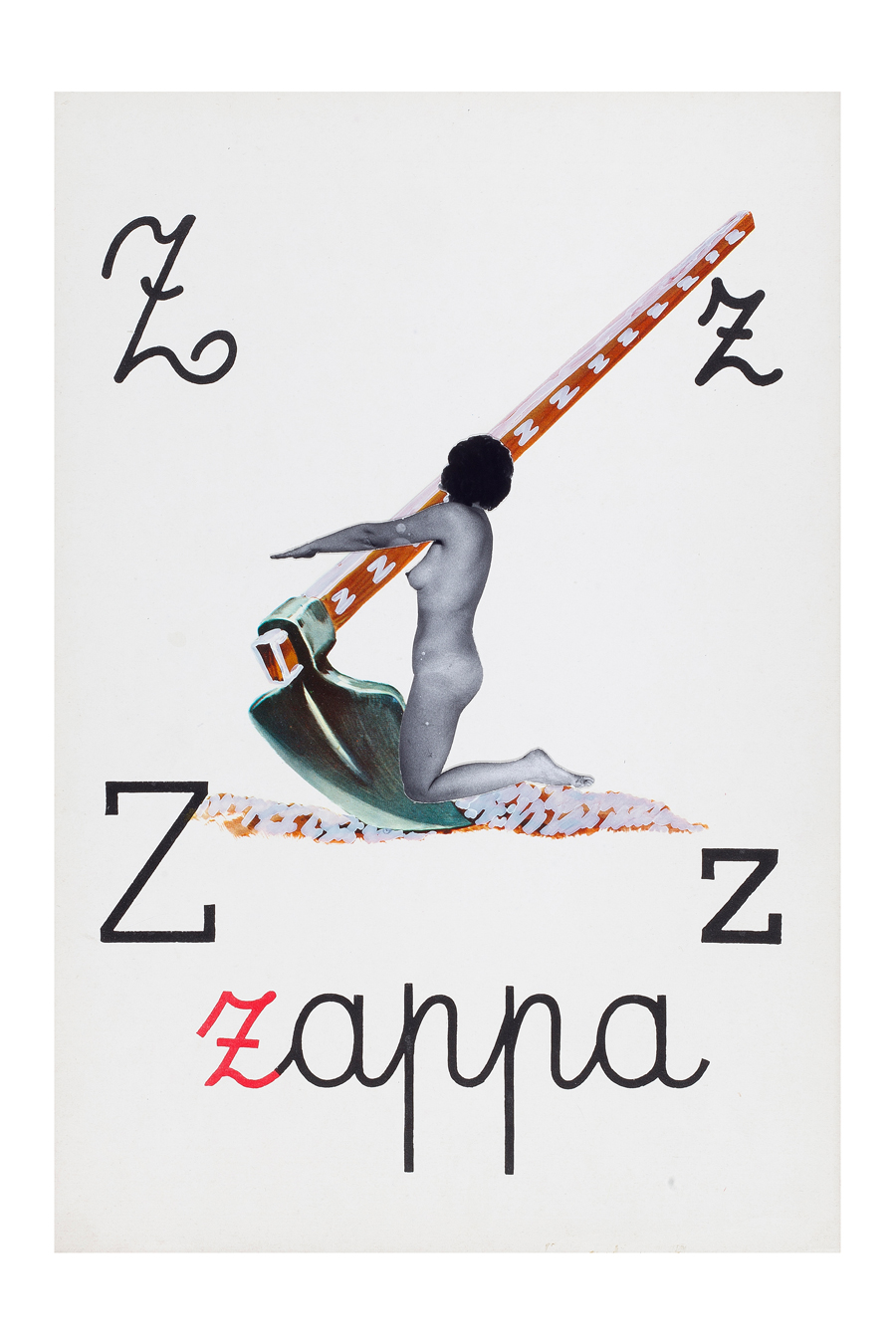
The most scathing of Binga’s works here are four instalments of the Alfabetiere pop (‘Pop Alphabet’, 1976), one of the projects she terms scrittura vivente, or ‘living writing’. The pop pieces are rectangular collages, featuring a letter or digraph in neat, primary-school script and a prim drawing of an object: ‘d’ for ‘dado’ (die), ‘r’ for ‘rosa’ (rose). Nestled in each drawing is a photograph of Binga’s naked body, bent into the letter’s shape. The viewer becomes a child again. Learn to identify these things all around you, so basic and so real: tools, flowers, women.
For Binga, unintelligibility is imposed by men, and she’s lifting her phrases and poses out of their deadened linguistic world. Schödl, in contrast, is rapt by the moods that words can’t describe. Like Binga, she creates sigil-like forms, which hint at private knowledge; they form the background to the 1970 Untitled watercolours, one of which has the non-title Scrittura segreta (‘Secret Writing’).

But Schödl’s work is enigmatic, not strident; she foregrounds its mysteries without wishing they’d be solved. In her studio, she enters trance-like states and writes single words or phrases across the work again and again, hundreds of times; then she pours tiny gold-leaf spots into the loop or curl of the initial letter of each word. The result, rippling down the wall, is what she calls a ‘seismograph’ of her body’s motion, now loosening the script, now tightening it up. The waves of gold go pulsing across the runic signs and slate-grey canvases, or the printed maps and musical scores that she’s picked up by chance.
Paired exhibitions attract comparisons and risk fissures. Schödl and Binga don’t collaborate, have never even met, nor (to my mind) is their work really much alike. A bridge has been skilfully built by the curator Paola Ugolini, but the two banks still seem a good way apart. That said, all the works on show at Richard Saltoun share a central belief: that rhythm is a trait of the body and women’s bodies are too closely policed. As you pass from typecode to painting, you see those restrictions being prised apart. These works are records of women in motion, whether they’re photographed directly or implied in a flash of gold.
Tomaso Binga & Greta Schödl: 'VOCALIZING' runs at Richard Saltoun Gallery, London, until 7 July.
Main image: Tomaso Binga, Typecode 2, 1978, (detail), drawing and typewriting, 25 x 27 cm. Courtesy: © the artist and Richard Saltoun Gallery, London
SaveSave









